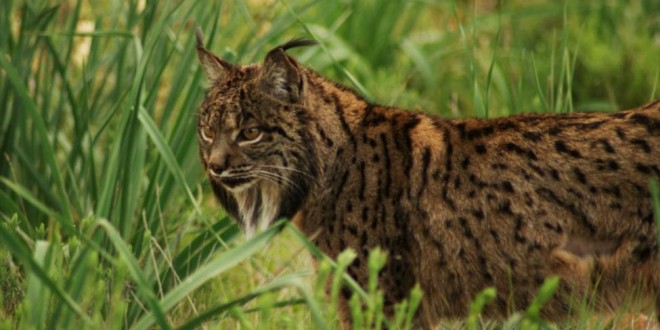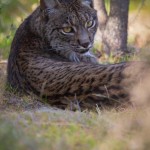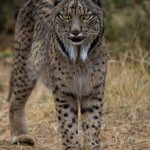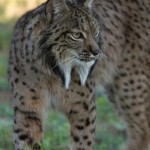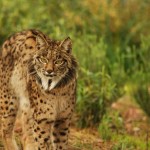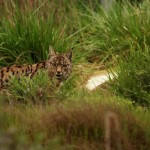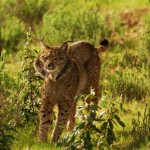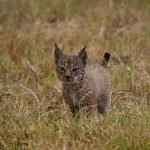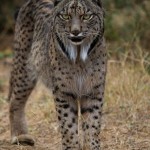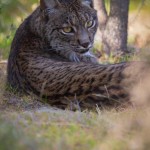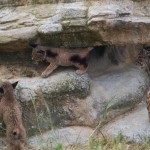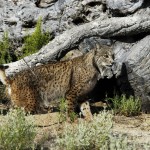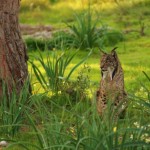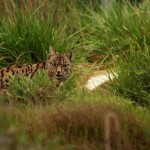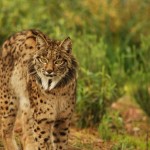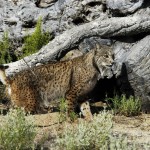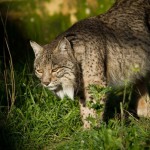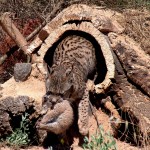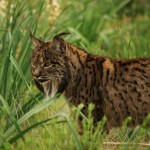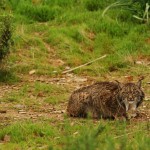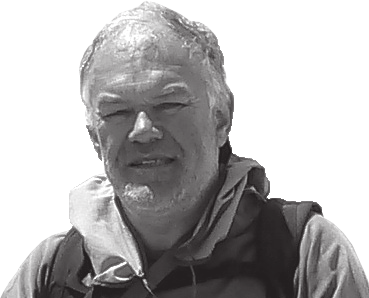 What is presumed to have been the last Portuguese lynx was seen at the beginning of the 1990s in the Monchique uplands. It was probably shot by hunters. But the species had already been driven to the verge of extinction. The population of wild rabbits, on which the lynx fed almost exclusively, shrank owing to a viral epidemic and to hunting. The lynx gradually starved. The greatest enemy of the Iberian lynx, however, continues to be human beings and their favourite toy, the car.
What is presumed to have been the last Portuguese lynx was seen at the beginning of the 1990s in the Monchique uplands. It was probably shot by hunters. But the species had already been driven to the verge of extinction. The population of wild rabbits, on which the lynx fed almost exclusively, shrank owing to a viral epidemic and to hunting. The lynx gradually starved. The greatest enemy of the Iberian lynx, however, continues to be human beings and their favourite toy, the car.
Against this backdrop, we have become more modest and celebrate the anniversary with humility. Exactly ten years ago, the most important conservation programme started at El Acebuche near Huelva in Andalusia. Its aim was to return the endangered Iberian lynx (Pardel lynx) to the wild through an ex-situ conservation programme*. The Iberian lynx is the most endangered cat species in the world, according to the International Union for Conservation of Nature and Natural Resources (IUCN) in Switzerland.
Since 2005, several interdisciplinary research groups have been working on a breeding programme involving 60 animals with reproductive potential in five centres. In the Doñana National Park in Matalascañas (El Acebuche) near Huelva, the preparations for the very laborious breeding programme began as early as 1992. In 2005, Jerez de la Frontera was added and in 2007 “La Olivilla” near Jaén. On 26th October 2009, the Portuguese “Guantanamo” opened in Vale Fuzeiros near Silves, managed by Águas do Algarve and the ICNF. In 2011, Zarza de Granadilla near Cáceres in Extremadura opened. The latest information suggests that, from the work of the past five years, there will be 20 to 40 young lynx available for releasing into the wild in the Iberian Peninsula in the coming years up to 2019.
By the middle of May, ten of these wild cats, which can be up to 70 cm long, had been released in Portugal, mainly in the eastern Alentejo, in the Parque Natural de Guadiana near Mértola. So far, nine of the lynx have survived. One cat, the female “Kayakweru”, which was released in February this year, was found poisoned on 12th March. ”For the future, it is uncertain whether lynx will have the chance to adapt their life and reproductive mechanisms to the environmental conditions that are dominated by humans,“ Steven Seet, press spokesman of the Leibniz Institute for Zoo and Wildlife Research (IZW) in Berlin, told ECO123.
 The institute is the scientific partner in the conservation breeding programme of the Iberian lynx. Since 2012, scientists from the IZW have been visiting the five conservation breeding centres in Spain and Portugal and training vets and carers at a number of workshops on site. With practical exercises, lectures and discussions, they were instructed about a quick test for diagnosing pregnancy in lynx. The use and interpretation of the quick test provides the basis for laboratory training. Joint projects involving Portugal, Spain and Germany promote research into the animals’ way of life, health and reproduction, and ultimately aim to release young animals into the wild in their former habitats.
The institute is the scientific partner in the conservation breeding programme of the Iberian lynx. Since 2012, scientists from the IZW have been visiting the five conservation breeding centres in Spain and Portugal and training vets and carers at a number of workshops on site. With practical exercises, lectures and discussions, they were instructed about a quick test for diagnosing pregnancy in lynx. The use and interpretation of the quick test provides the basis for laboratory training. Joint projects involving Portugal, Spain and Germany promote research into the animals’ way of life, health and reproduction, and ultimately aim to release young animals into the wild in their former habitats.
On average, a lynx bears two or three young once a year. Lynx are nocturnal loners and use their five- to eight-centimetre-long ear tufts to hear and orientate themselves better. At the end of 2014, there were 149 lynx pardinus living in captivity in Spain and Portugal, and 309 in the wild.
Further information:
http://www.lynxexsitu.es/index.php
www.izw-berlin.de/luchs
 Eco123 Revista da Economia e Ecologia
Eco123 Revista da Economia e Ecologia

